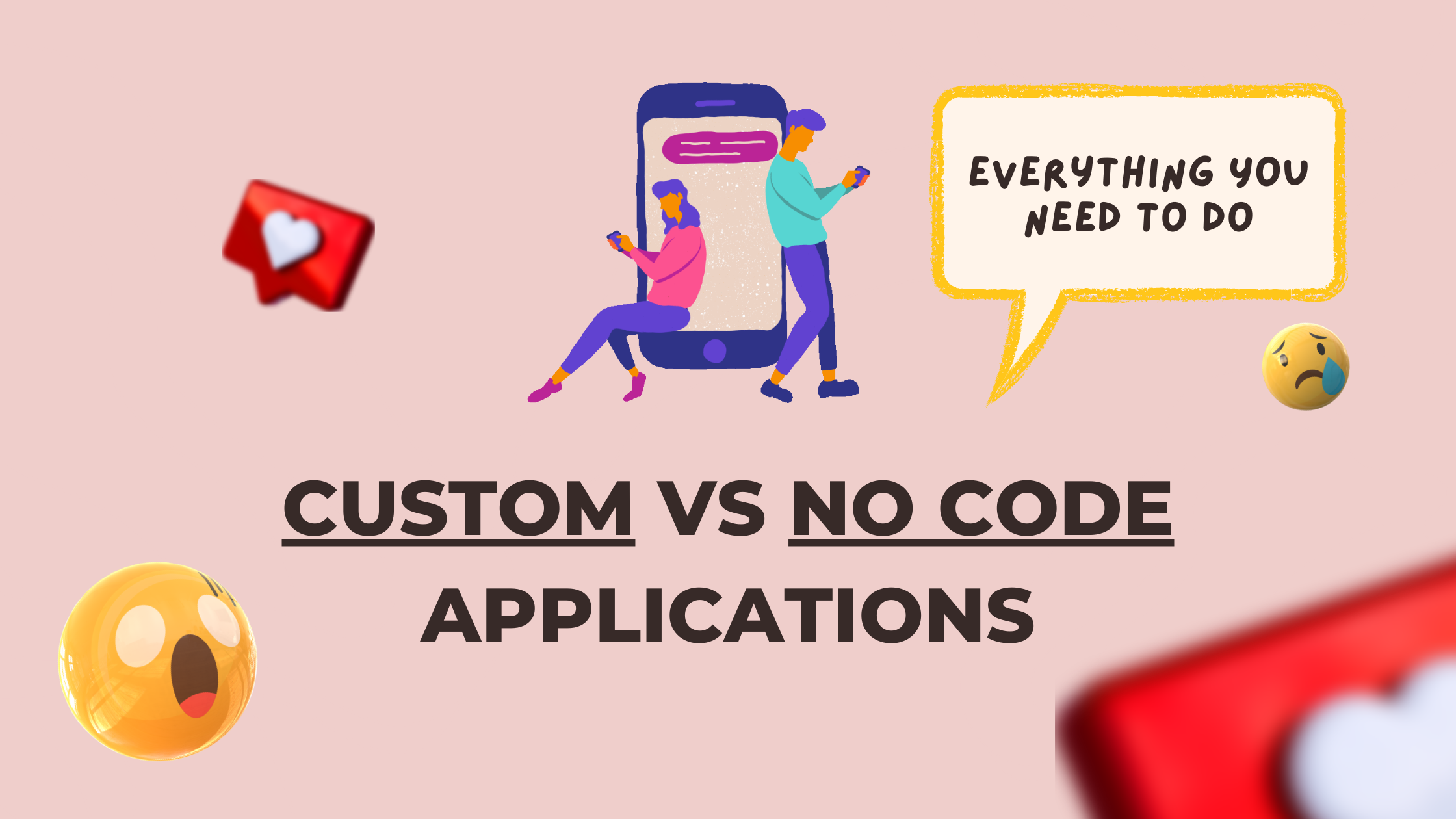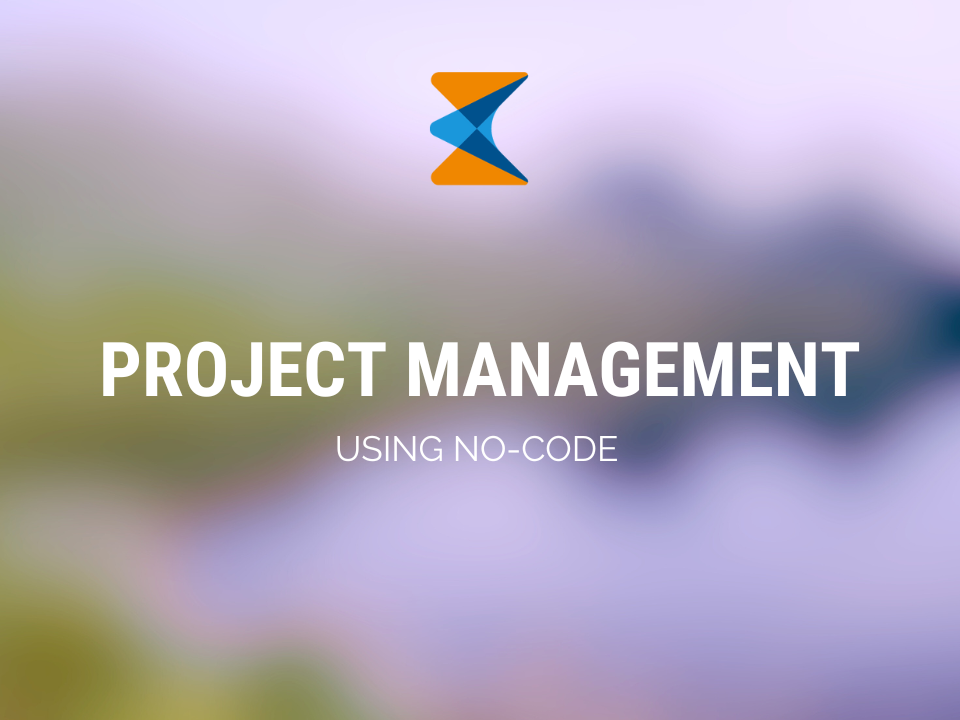Hello world!
May 28, 2018
Custom vs No Code Applications
November 29, 2022
No code platforms are overturning the manner businesses make and manage their websites. These seemingly impressive platforms allow users to create and manage their websites without the burden of writing a single line of code, which poses a huge advantage for enterprises not having the time oar resources to code.
If you’re interested in knowing what a no-code platform is in-depth, this blog is for you. Continue reading as we’ll tackle what no-code platforms are, how they operate, and some of the key benefits they offer businesses. Let’s begin.
No-code platform, defined.
No code platform is defined as a software development platform that enables you to make apps without writing any actual code. It alternatively allows you to craft applications by connecting modules, filling in forms, and configuring the app’s setting. In essence, no code is a layer of abstraction present in common programming languages such as Swift for iOS, HTML, Javascript, and other software development kits (SDKs).
No-code platforms also handle non-developer IT and technical talks so novices can make applications more independently. These platforms enable beginners to build databases, access data, and be involved in other aspects of building apps or websites without writing code.
Low Code Versus No Code
A no-code platform is defined as simply no-code. If no code means no coding, it doesn’t resemble low code. Low code platforms instead are the latest addition to the no-code solutions, and these ones allow users to perform basic app-building activities without needing to conduct coding. However, the very definition of low-code applied by the IT industry is a software development platform that permits casual programmers to make applications. Low code platforms still require coding to complete the development of an application. They are generally aimed at developers who want to build applications faster, while no-code platforms appeal to business owners with zero coding knowledge.
Features of a No-Code Platform
Drag and drop interface
No-code platforms have a drag and drop interface used in building applications. This feature eases the application development process, as it works by letting users click and drag items into place, giving no-code rookies the functionalities of coding experts.
Data connections
Most no-code platforms either come preconfigured with database and server-side software, and others simply render a straightforward and effortless user interface to connect with the database of your choice.
No-code platforms aid in building user-facing visuals. They also extend support in the data management and processing abilities that run behind the scenes to assist you in completing your business workflows.
User interface builder and graphic modeling
A no-code platform also comes with a user interface builder that permits users to put together preconfigured elements quickly and conveniently to put together a website and application.
Through no-code platforms, users just have to drag and drop and organize components in a logical sequence to produce a sense of functionality. Everything is already crafted and visually modeled.
Integrations
Most businesses employ multiple applications and seek connectivity to better and automate their collaboration and workflow. For this fact, most no-code platforms offer a variety of integrations with other software that empowers users to connect their data and processes without the need for duplication and manual work.
A no-code platform adapts API integration that can easily be integrated on apps you are building to use all sorts of web applications such as Google Maps, Slack, YouTube, and many more.
AI and machine learning
With the hike in artificial intelligence and machine learning to automate work and get improved insights into your data, most present-day applications need to capitalize on these new-age capabilities.
In general, a no-code platform also offers either inbuilt or integration capabilities of connecting with ML and AI models to improve your applications. This aids in predicting user actions and making the application development procedure even more streamlined and efficient.
Key Benefits of No-Code Platforms
A no-code platform renders more agility
More than 90% of the development you do on the model using the no-code method is yielded through drag and drop by employing already built modules. This means quicker speed for creating applications. Also, the testing part of many application buildings is made automatic by no-code platforms, this aids in cutting down the total development time.
A no-code platform is cost-effective.
No-code platforms will help you in lessening the total cost of building and sustaining applications. By employing a no-code platform, you will no longer need to rely on highly technical skilled individuals with high commission fees for creating and keeping applications afloat. Because of the modular nature of building applications in a no-code platform, the total time and effort are drastically lower than conventional coding. Since you can craft applications fast and conveniently, the overall costs are lessened because you get more done with less.
A no-code platform gives increased productivity.
Since the speed of creating applications via no-code platforms increases and becomes easy, it makes way for increased productivity. The work that comes with building applications that used to be months is now done within hours, with a few days at maximum.
A no-code platform is easily changeable.
The problem with conventional coding is that it becomes challenging to alter functionality, notably if the code is presented in a language that is foreign to you. With a no-code platform, users can easily change the functionality within hours.
And there, you have a comprehensive overview of what a no-code platform is. If you are a business owner or someone keen on building applications but doesn’t want to commit to learning how to code, you’ll enjoy using a no-code platform.




